Dense labeling of large remote sensing imagery with convolutional neural networks: a simple and faster alternative to stitching output label maps
The normal way to cut the images is to cut it in “tiles”, but this approach suffers from computational inefficiency and can result in discontinuities at output boundaries to overcome this problem, and substantially reduce the negative impacts of label stitching, by artificially increasing the input-patch size of CNNs only during label inferenc.
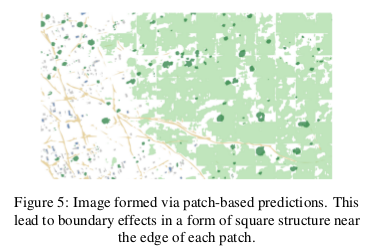
They propose an approach in which the input size of the CNN is dramatically increased only during label inference. They evaluate the performance in comparaison of a conventional stitching approach using two segmentation models and two large-scale remote sensing imagery datasets.
The results suggest that the proposed approach substantially reduces label inference time, while also yielding modest overall label accuracy increases.
Models
- U-Net
- Deeplab-CRF
Datasets
- INRIA building labeling competition
- The solar array labeling dataset
Experiments
Giving a 321x321 patches but resized the output of the networks to give 736x736.
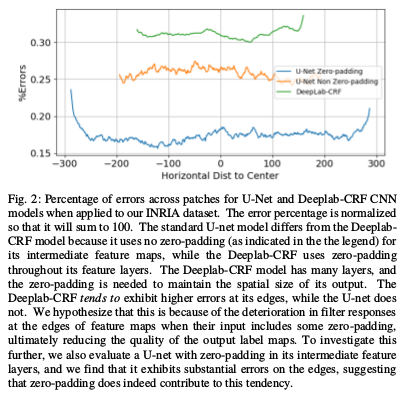
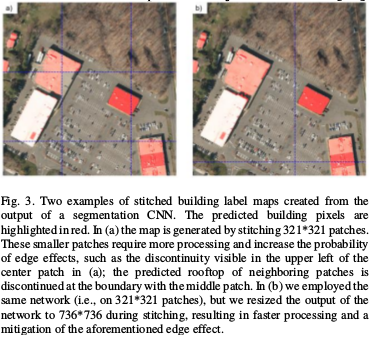
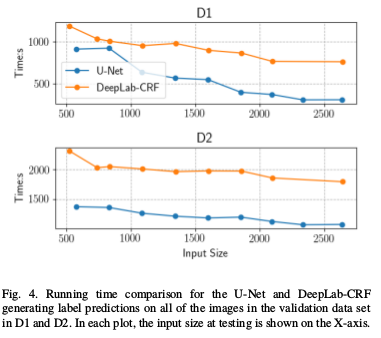
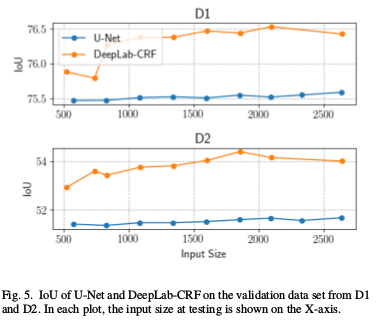
Acknoledgements
This approach contributed to winning entry (overall performance) in the INRIA building labeling competition.